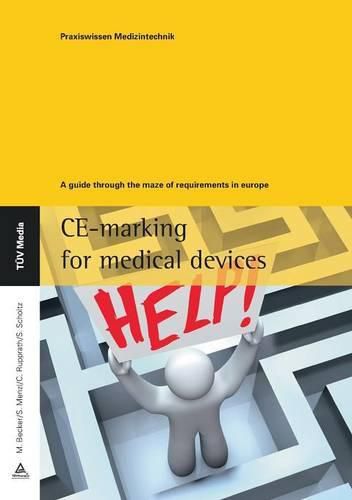Readings Newsletter
Become a Readings Member to make your shopping experience even easier.
Sign in or sign up for free!
You’re not far away from qualifying for FREE standard shipping within Australia
You’ve qualified for FREE standard shipping within Australia
The cart is loading…






This title is printed to order. This book may have been self-published. If so, we cannot guarantee the quality of the content. In the main most books will have gone through the editing process however some may not. We therefore suggest that you be aware of this before ordering this book. If in doubt check either the author or publisher’s details as we are unable to accept any returns unless they are faulty. Please contact us if you have any questions.
The development of medical technology in the last years of the 20th century has been very dynamic. Synthetic single-use products, artificial joint replacements, pacemaker technologies or minimal-invasive procedures result in a high standard of medical care. But despite of the huge progress in this field, we are presumably only at the beginning of a medical technology revolution. The 1st version of the German Medizinproduktegesetz (MPG, Medical Devices Act) came into effect on January 1, 1995. It represents the national implementation of the European directives 90/385/EEC for active implantable medical device, 93/42/EEC for medical devices and 98/79/EEC for in vitro diagnostic devices. With the implementation of this act in the EU internal market, the free movement of medical devices was established. Medical devices that are marketable in one member state of the EU are also marketable in the other EU countries. Manufacturers of medical devices can therefore place their products on the whole EU market. The CE-mark on the products is the proof of complying with the essential requirements. The Medical Devices Act guarantees the efficacy and safety of the medical device because the product has to undergo comprehensive control procedures during the design and manufacturing process. The CE-mark is a cachet for quality and efficacy. After the market access, the authorities take care of the safety for users and consumers via definition of essential requirements. This book presents the major aspects of the Medical Devices Act and the European directives. Moreover, the responsibilities and duties of a medical device manufacturer are explained as well as the product classifications and what the manufacturer has to keep in mind when designing and producing medical devices that comply with the legal requirements. A lot of physicians implant medical devices without being aware of the highly complex registration landscape. Especially in clinical research, the regulations regar
$9.00 standard shipping within Australia
FREE standard shipping within Australia for orders over $100.00
Express & International shipping calculated at checkout
This title is printed to order. This book may have been self-published. If so, we cannot guarantee the quality of the content. In the main most books will have gone through the editing process however some may not. We therefore suggest that you be aware of this before ordering this book. If in doubt check either the author or publisher’s details as we are unable to accept any returns unless they are faulty. Please contact us if you have any questions.
The development of medical technology in the last years of the 20th century has been very dynamic. Synthetic single-use products, artificial joint replacements, pacemaker technologies or minimal-invasive procedures result in a high standard of medical care. But despite of the huge progress in this field, we are presumably only at the beginning of a medical technology revolution. The 1st version of the German Medizinproduktegesetz (MPG, Medical Devices Act) came into effect on January 1, 1995. It represents the national implementation of the European directives 90/385/EEC for active implantable medical device, 93/42/EEC for medical devices and 98/79/EEC for in vitro diagnostic devices. With the implementation of this act in the EU internal market, the free movement of medical devices was established. Medical devices that are marketable in one member state of the EU are also marketable in the other EU countries. Manufacturers of medical devices can therefore place their products on the whole EU market. The CE-mark on the products is the proof of complying with the essential requirements. The Medical Devices Act guarantees the efficacy and safety of the medical device because the product has to undergo comprehensive control procedures during the design and manufacturing process. The CE-mark is a cachet for quality and efficacy. After the market access, the authorities take care of the safety for users and consumers via definition of essential requirements. This book presents the major aspects of the Medical Devices Act and the European directives. Moreover, the responsibilities and duties of a medical device manufacturer are explained as well as the product classifications and what the manufacturer has to keep in mind when designing and producing medical devices that comply with the legal requirements. A lot of physicians implant medical devices without being aware of the highly complex registration landscape. Especially in clinical research, the regulations regar